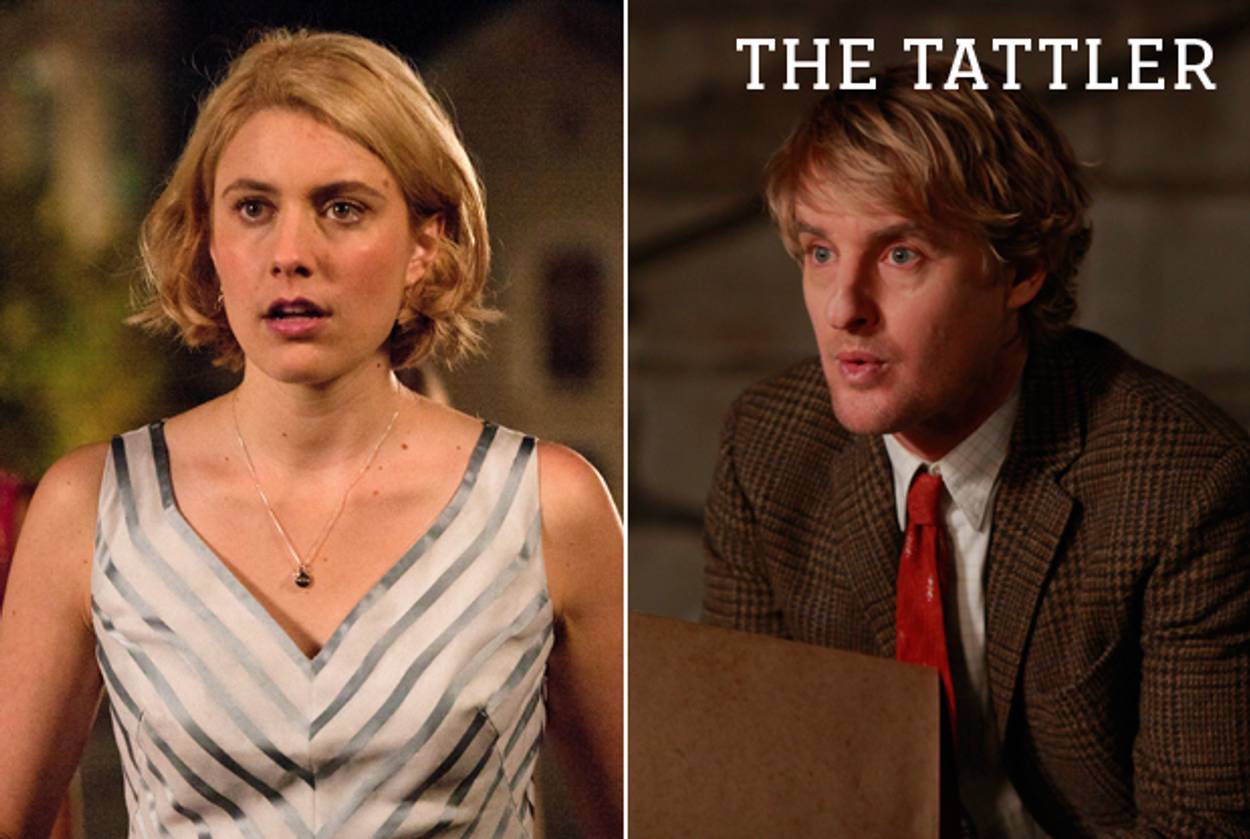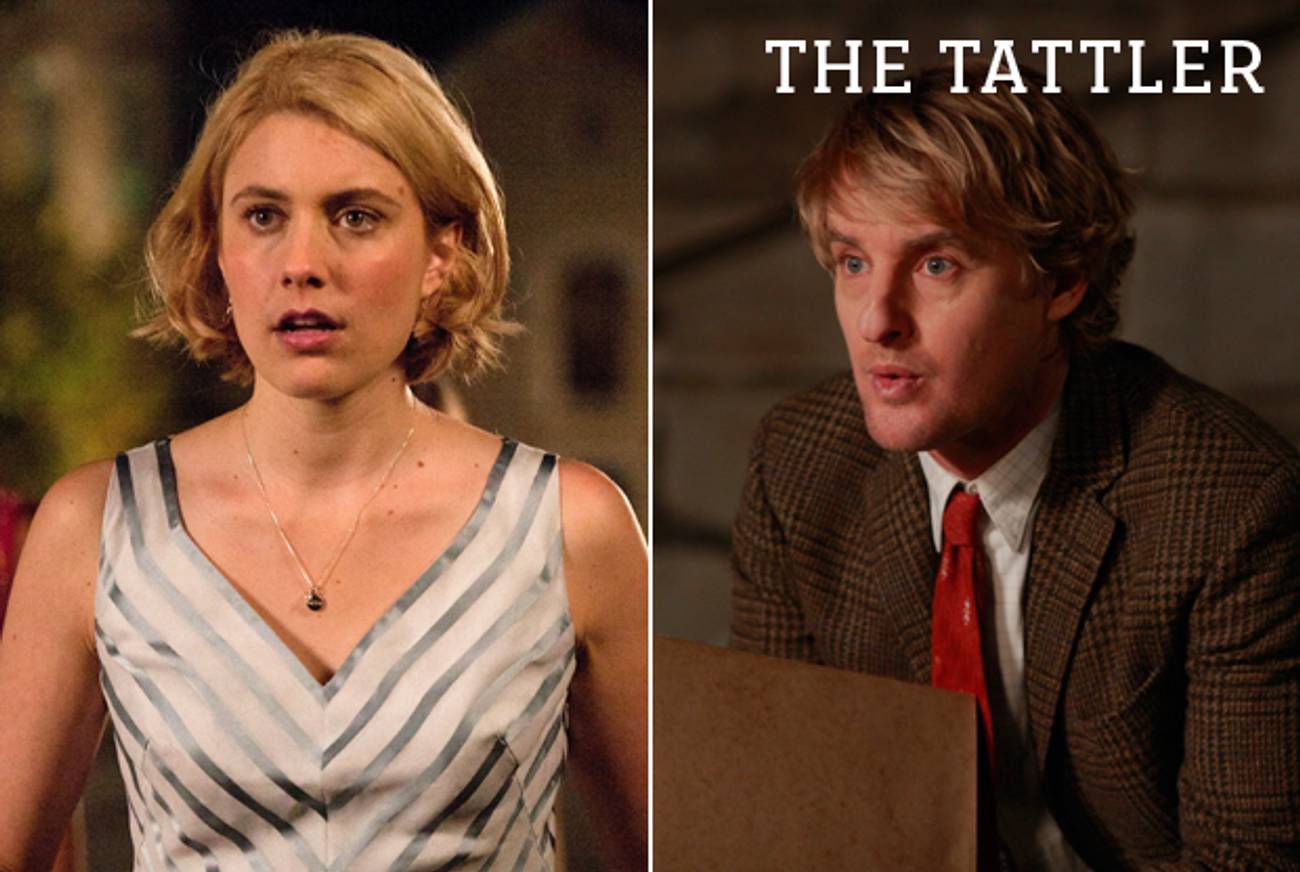The WASP Woody Allen?
In Damsels in Distress, preppy auteur Whit Stillman fetishizes a world of limits, quite contrary to the Jewish director to whom he’s often compared




“The WASP Woody Allen.” It’s a descriptor that has been attached so persistently to Whit Stillman—the filmmaker and unapologetic chronicler of the discreet charms of what his unforgettable 1990 debut Metropolitan termed the “Upper-Haute Bourgeoisie, or UHBs”—that it has practically become a cliché, trotted out with the release of each of his highly anticipated films.
His latest offering (and his first since 1998’s The Last Days of Disco) is Damsels in Distress, about a group of four prim young ladies seeking to “improve” the lives of the dullards and depressives who are their classmates at their sun-dappled Northeastern liberal arts college. The film offers no exception to the Allen comparison, but it does reassert a question: Does this comparison even make any sense, outside of a Hollywood pitch meeting? Do the famously rumpled upstate WASP and the famously rumpled Brooklyn Jew really have anything in common apart from a penchant for wordy dialogue and tweed jackets that appear never to have suffered the civilizing touch of an iron? Is a WASP Woody even possible?
On the surface, there are certainly similarities: Both men’s films are packed with anxious types too verbally dexterous for their own good, and who visually seem to exist in a setting curiously outside of time, where clothing and interiors are oddly sepia-tinged and wholly untouched by even the merest nod to contemporary fashions. (In Allen’s defense, this tendency is much more marked in his later films, the early ones owing much to the fashion-forward kookiness of the young Diane Keaton.) Allen and Stillman also share a similar belief in the transcendent power of popular songs from the first half of the 20th century—Damsels in Distress ends with an endearingly inept tap number performed to George Gershwin’s “Things Are Looking Up” (from the 1937 Fred Astaire vehicle A Damsel in Distress, naturally) that could have come straight out of Everyone Says I Love You. Both seem to view technology, that harbinger of uncomfortable modernity, with marked suspicion if not outright hostility: Allen’s literary heroes generally write, as he does, on an old-fashioned typewriter, while Stillman’s first three films are all set before the advent of the Internet and its malcontents; in Damsels,a character makes reference to most communication “nowadays” being electronic, but he would never be so gauche as to permit a device upon which such messages might be conveyed into the frame. In short, both men have a strong romantic attachment to The Way Things Used To Be.
But the way they relate to their respective imagined pasts is where the similarities end. It’s often said—again, to the point of cliché—that the overarching Jewish-American pop cultural narrative of the 20th century and beyond is one of assimilation, the struggle to leave behind the stifling strictures of a group identity not freely chosen; to live not as a collective “Other” (a state of being as internal as it is external) but as self-actualized, individuated human beings who are empowered to express their personal impulses and desires as they see fit, no matter how they may come into conflict with the propriety of previous generations. Nobody personifies this better than Woody “the heart wants what it wants” Allen; you can almost feel the perverse glee with which his on-screen self romances lithe teenage shiksas as his off-screen self does, well, pretty much the same thing. Who’s a nice Jewish boy now?
By contrast, Stillman’s WASPs crave respectability, propriety, rules with a fervor that borders on fetishism. Stillman’s characters may not be uniformly to the manor born (although his sense of class gradation seems to be akin to Julian Fellowes explaining how his not having a hereditary title makes him practically middle class) but this detail itself is telling. Violet, Rose, Heather, and Lily—the titular damsels parading demurely across the manicured lawns of the fictional Seven Oaks College, dispensing doughnuts and cheerful truisms to the distressed students that shamble into the (literally) whitewashed suicide-prevention center that they run on campus—cling to their starched blouses and Alice bands as tenaciously as a devout young Hasid to his beard and peyes. They are actively choosing their Otherness, clinging to seemingly outmoded values like personal virtue and self-sacrifice as signifiers of being moored to a tradition greater than themselves. “I love clichés and hackneyed expressions of all kinds,” remarks Violet, the pathologically proper (and almost certainly mentally unstable) leader of the damsels, seeing in them a vast repository of centuries of human experience and wisdom we would be foolish to ignore.
Such is the rabbit hole of nostalgia for the truly committed WASP, and one that unlike Stillman, Allen is able to cleanly avoid. A Jew, no matter how much he may admire F. Scott Fitzgerald, eventually has to admit that life is better now, what with the readily available allergy medications and fluoridated water and, you know, no pogroms or Nazis. Even Owen Wilson’s character in Midnight in Paris, having seen the glories of Jazz Age Montmartre, has to admit as much. It’s difficult to imagine Violet doing the same thing. Seen through this lens, Stillman isn’t so much Allen’s gentile equivalent as his mirror image.
And yet, for both artists, the question that lies at the heart of their work is the same existential one: Why go on living? Or, put more directly, what makes life worth the trouble? For Allen, much of the joy seems to come in the unsolvability of the argument itself; for Stillman, it’s a question of finding profundity in simple things. Tap shoes. A conga line, a bar of nice soap, Cézanne’s paintings of apples and pears … oh, wait, that’s Allen. Maybe we’re not so different after all. As Violet says, her drive toward goodness is based in simple Christian morality: “Well, Judeo-Christian, to be exact.”
***
Like this article? Sign up for our Daily Digest to get Tablet Magazine’s new content in your inbox each morning.
Rachel Shukert, a Tablet Magazine columnist on pop culture, is the author of the memoirs Have You No Shame? and Everything Is Going To Be Great. Starstruck, the first in a series of three novels, is new from Random House. Her Twitter feed is @rachelshukert.
Rachel Shukert is the author of the memoirs Have You No Shame? and Everything Is Going To Be Great,and the novel Starstruck. She is the creator of the Netflix show The Baby-Sitters Club, and a writer on such series as GLOW and Supergirl. Her Twitter feed is @rachelshukert.